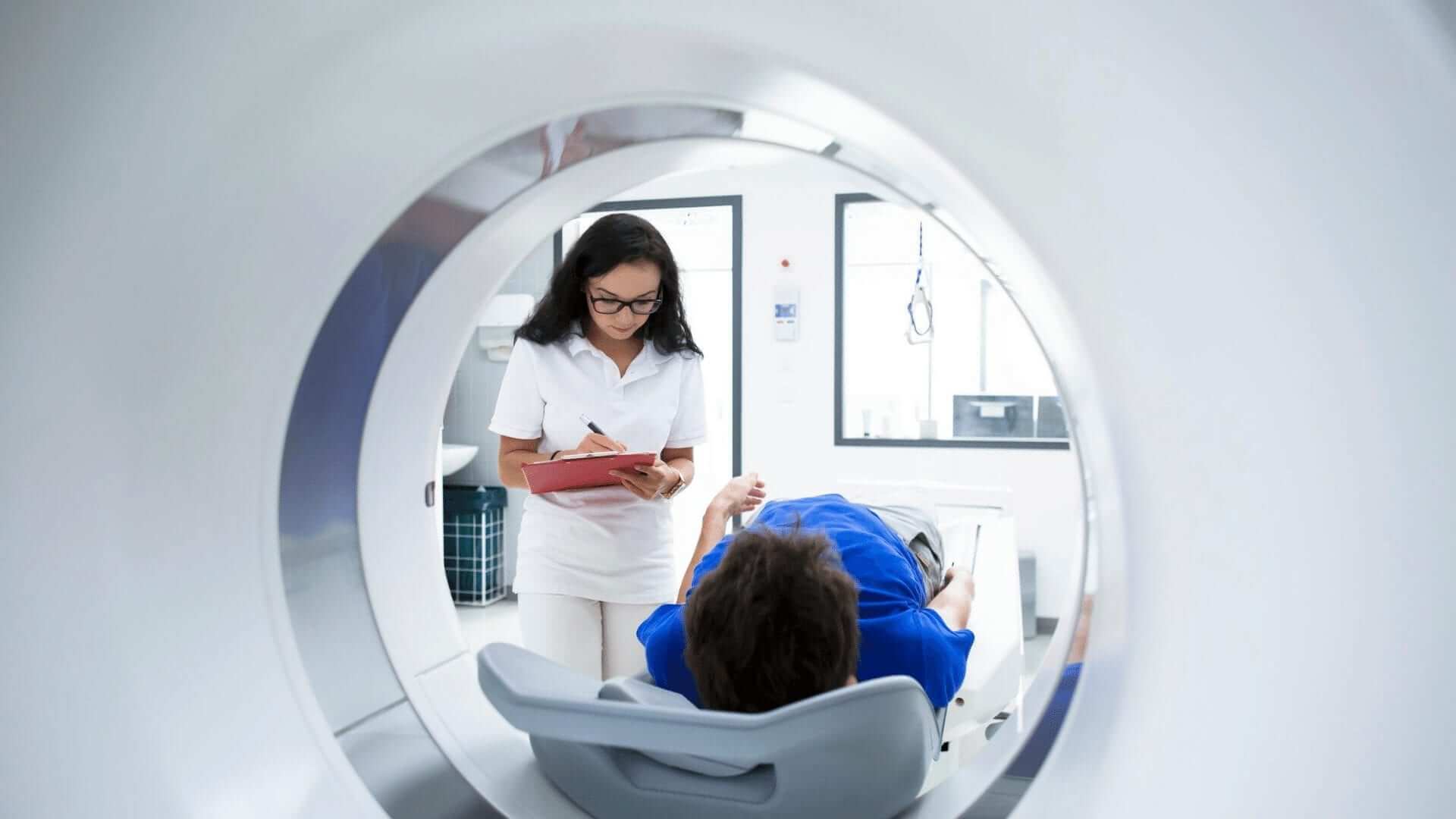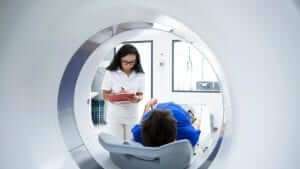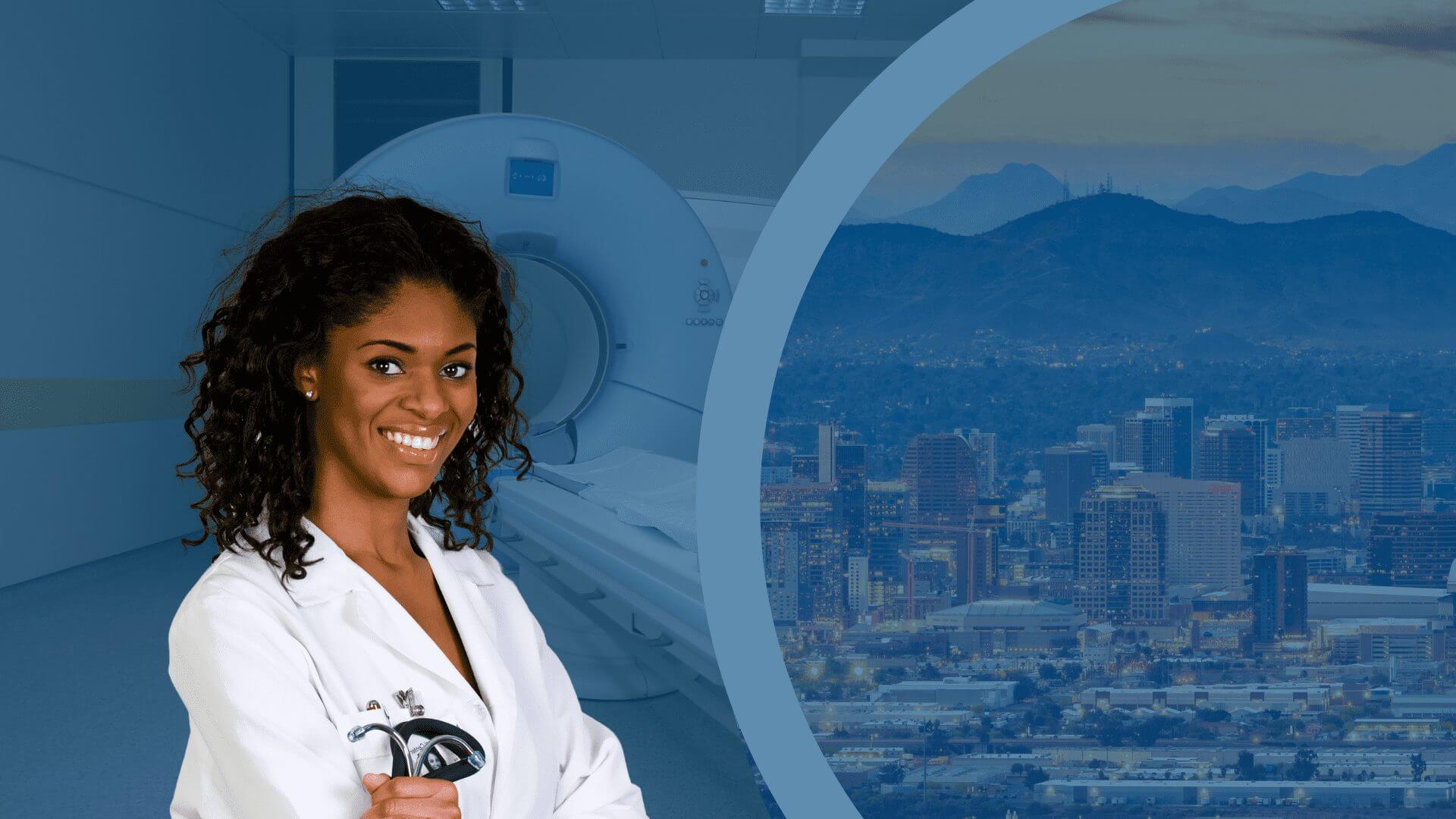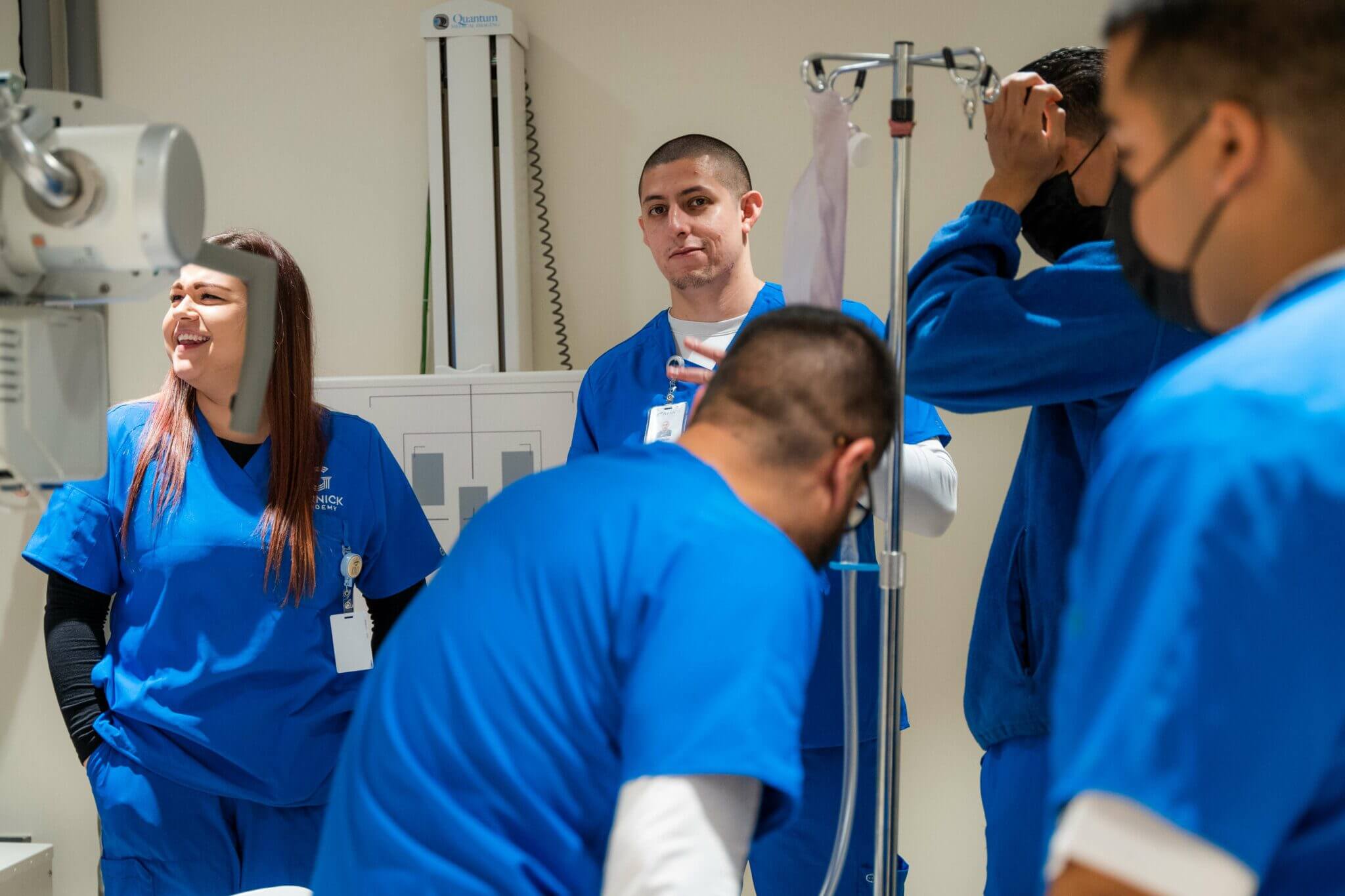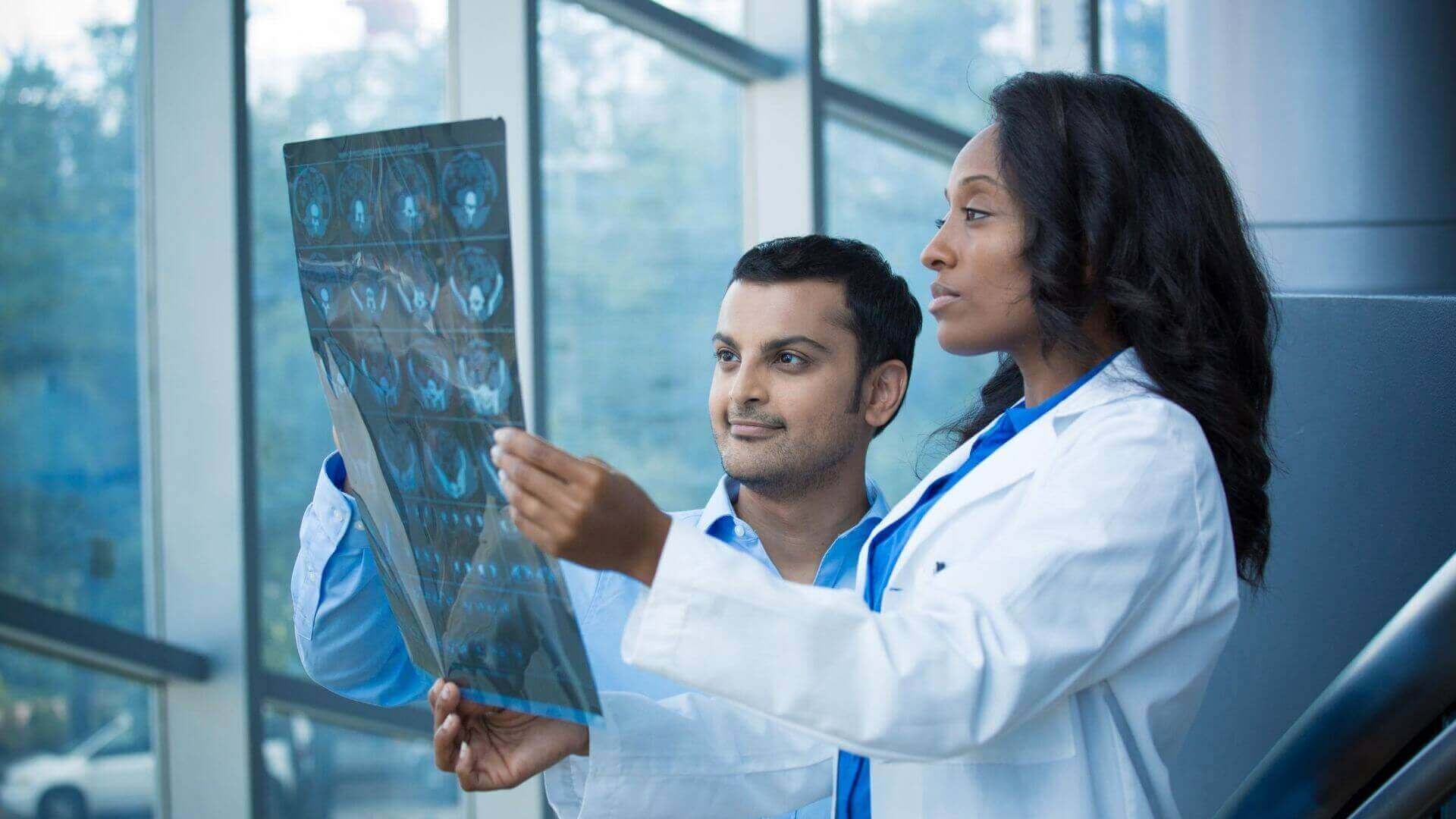Radiologic Technology Schools Offer Degrees and Specialties
Date: October 4, 2022
What is Radiologic Technology?
Radiologic Technologists are trained to take medical images for diagnosis and early detection of disease or injury. On the whole, Radiologic technology (RT) is a general term applied within allied healthcare for imaging the human body. For the most part, this technology encompasses any one of the following techniques:
● Ionizing Radiation (X-ray);
● Sound or Radio Waves;
● Radioactive Substances to Produce an Image;
● Magnetic Imaging.1
Because of this increased demand and imaging success, employment in the profession has also ensued. Consequently, modern vocations in all things radiologic technology are on the rise.
Employment in RT
Accordingly, perhaps you, too, want to pursue a career conducting these technical procedures. If so, you’re not alone!
According to the Bureau of Labor Statistics, “Overall employment of Radiologic and MRI Technologists is projected to grow by nine percent from 2020–2030. All in all, RT growth is nearly as fast as the average for all occupations.”2 For this reason, recruits are not only needed in the industry but also in its related specialties. Further, a recent National Library of Medicine survey shows an increased demand for multi-modality and cross-trained technologists.3
Niche Areas and Specialties
Future Radiologic Technologists (RTs) may obtain associate or bachelor’s degrees. They may also undergo additional coursework and training to pursue niche areas and specialties. Alternatively, some professionals cross over from other vocations to earn RT certification. Usually, this training helps one work in a highly specialized field.
For example, one such RT hybrid is oral maxillofacial radiology (OMR). Generally speaking, OMR is an X-ray specialty used for diagnosing and treating the mouth, teeth, face, and jaw (a.k.a. the maxillofacial region).4 Briefly translated, an OMR role combines two modalities, dentistry, and radiologic technology.5 Ultimately, one becomes an OMR radiologist through postdoctoral training to perform this specialty.5
Specialty Tracks
Using a Bachelor’s degree in Diagnostic Medical Imaging (BSDMI), imaging professionals may pursue various hybrid imaging tracks. Examples of bachelor-level specialty tracks for imaging professionals include:
1, Imaging Informatics
First, informatics is training to be a PACS administrator. Essentially, a PACS administrator is a healthcare professional who maintains Picture Archiving and Communication Systems for functionality and efficiency.6 Our Academy trains in imaging informatics courses with objectives to prepare students for roles as PACS/RIS administrators.
2, Leadership and Management
Second, as medical imaging evolves, RTs are increasingly asked to manage people and run departments. Notwithstanding, Gurnick Academy trains in leadership and management. Teachers seek to prepare students for healthcare administration and management positions in our BSDMI program.
3, Education
Third, to be a successful RT instructor, one needs various pedagogical and soft skills. Soft skills primarily include patience, leadership, and the ability to manage a classroom and student expectations.7 Presently, the school trains in educational courses, as highlighted by the BSDMI program. As a rule, the program seeks to prepare students for careers as instructors.
4, Mammography
Fourth, mammography is a specific type of breast imaging that uses low-dose X-rays to detect cancer before women experience symptoms.8 Our Academy’s mammography courses include all MQSA-mandated materials. In brief, these classes emphasize mammography registry review for future mammographers.
5, Computed Tomography (CT)
Fifth, CT Technologists are Diagnostic Radiologic Technologists who use Computed Tomography (CT) scanning machines. Predominately, these professionals produce three-dimensional X-rays to generate cross-sectional images on viewing screens.9 Most often, these are used for brain imaging. Our instructors teach physics and instrumentation of CT, clinical procedures, and protocols. Teachers also instruct future professionals in patient care and radiation safety skills.
6, Magnetic Resonance Imaging (MRI)
Sixth, MRI is a way of obtaining detailed images of organs and tissues throughout the body without using X-rays or “ionizing” radiation. MRI technique relies on a powerful magnetic field, radio waves, rapidly changing magnetic fields, and a computer to create images.10 Objectives for our MRI program include an academic framework covering physical MRI principles and advanced MRI applications. Additionally, course objectives include sectional anatomy and MRI Safety and Registry Review.
Overview of Offerings
Do you think this vocation or one of its specialty tracks may be for you? Yet, you aren’t sure where to begin? Remember, there’s no “one-size-fits-all” program. Moreover, Gurnick Academy offers a spectrum of courses. These include the following offerings.
Courses
a. X-ray Technician with Medical Assistant Skills;
b. Associate of Occupational Science in Radiologic Technology;
c. Associate of Science in Magnetic Resonance Imaging;
d. Associate of Science in Radiologic Technology;
e. Associate of Science in Ultrasound Technology;
f. Associate of Science in Nuclear Medicine Technology;
g. Bachelor of Science in Diagnostic Medical Imaging Programs.*
*Includes six specialty tracks.
Re-defining Work Areas
Hospitals, medical places, imaging centers, outpatient care facilities, and physicians’ offices require imaging services. However, there are also “outside-the-box” places where RTs with specialty tracks may find themselves working. It may be of some surprise RT vocations are no longer just within hospital corridors. For example, PACS administrators may work in businesses, including medical information and technology companies.6
Likewise, mammographers may find themselves working in specialty women’s centers. Simultaneously, an RT instructor might work with young minds at a community college or university. Similarly, an MRI specialist can apply to work as a supervisor and administrator.
Meanwhile, others with RT training specialties may be tempted to take their acumen on the road. Presently, many RTs find travel jobs with per diem work assignments and rotating areas and districts. Still, more RTs pack their suitcases and take their RT specialties wherever their next adventure leads.
Think This Might Be For You?
Given these points, do you wish to know where an imaging program might lead you? Be assured we have specialists trained to help you pick the right area that is right for you. In summary, to find more in-depth information and resources, click here.
Citations:
1 “Radiologic Technology.” Gale Encyclopedia of Nursing and Allied Health. Encyclopedia.com. (Accessed Aug. 9, 2022.)
2 Bureau of Labor Statistics, U.S. Department of Labor. Occupational Outlook Handbook. Radiologic and MRI Technologists. (Accessed Aug. 9, 2022.)
3 Handago, Lars. National Library of Medicine, “Cross-Trained Radiologic Technologists: A Survey.” Radiology Management, Vol. 37, No. 4. July 1, 2015, pp. 47–51. (Accessed Aug. 9, 2022.)
4 “Oral Maxillofacial Radiology—Benefits and Risks of Radiology.” Consumer Guide to Dentistry, CEATUS Media Group LLC. (Accessed Aug. 9, 2022.)
5 ^a, b “Becoming an OMR |AAOMR.” Aaomr.org, American Academy of Oral and Maxillofacial Radiology. (Accessed Aug. 9, 2022.)
6 ^a, b Editorial Team. “How to Become a PACS Administrator.” Indeed Career Guide. Indeed. Mar. 8, 2021. (Accessed Aug. 10, 2022.)
7 Marketplace Research Team. “Radiologic Technology Instructor: What Is It? And How to Become One?” ZipRecruiter, ZipRecruiter, Inc., 2022. (Accessed Aug. 10, 2022.)
8 Radiology (ACR), Radiological Society of North America (RSNA), and American College of. “Mammography.” Radiologyinfo.org, Radiological Society of North America, Inc. (RSNA). March 23, 2021. (Accessed Aug. 10, 2022.)
9 Detailed Occupational Guide. Ca.gov, Employment Development Department: State of California. 2020. (Accessed Aug. 9, 2022.)
10 Radiology (ACR), Radiological Society of North America (RSNA), and American College of. “Magnetic Resonance Imaging (MRI) Safety.” Radiologyinfo.org, Radiological Society of North America, Inc. (RSNA). July 30, 2021. (Accessed Aug. 10, 2022.)


